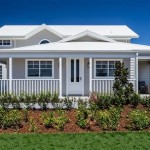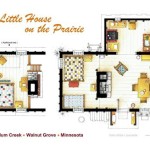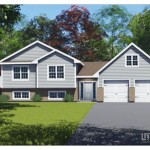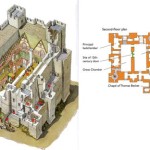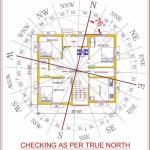My Ideal House Floor Plan
Designing an ideal house floor plan requires careful consideration of lifestyle, needs, and aesthetic preferences. A well-designed floor plan maximizes space utilization, promotes flow and functionality, and enhances the overall living experience. This article explores key elements and considerations for crafting a personalized and efficient floor plan.
Defining Needs and Priorities: The first step in designing an ideal floor plan is to assess individual requirements. Factors such as family size, lifestyle habits, and future needs play a significant role in determining the layout and size of different spaces. Considerations should include the number of bedrooms and bathrooms, whether a dedicated home office is required, and the importance of communal spaces like a living room or family room.
Open vs. Closed Floor Plans: One of the primary decisions involves choosing between an open or closed floor plan. Open floor plans combine multiple living spaces into one large area, promoting a sense of spaciousness and allowing for seamless interaction between family members. Closed floor plans offer greater privacy and separation between rooms, making them ideal for individuals who prefer distinct functional zones.
Optimizing Space Utilization: Efficient space utilization is crucial, especially in smaller homes. Careful planning can help avoid wasted space and maximize the functionality of each area. This can be achieved through strategically placed furniture, built-in storage solutions, and multi-purpose rooms that can adapt to changing needs.
Natural Light and Ventilation: Incorporating ample natural light and ventilation is essential for creating a healthy and comfortable living environment. Large windows, skylights, and strategically placed vents can help maximize natural light and airflow, reducing the need for artificial lighting and air conditioning.
Kitchen Design and Functionality: The kitchen is often considered the heart of the home, and its design should prioritize functionality and efficiency. The work triangle, formed by the sink, stove, and refrigerator, should be optimized for ease of movement and workflow. Considerations such as countertop space, storage capacity, and the placement of appliances are also crucial for creating a practical and user-friendly kitchen.
Bathroom Layouts and Considerations: Bathroom design should prioritize both functionality and aesthetics. Considerations such as the number of sinks, the type of shower or bathtub, and the placement of toilet and storage units can significantly impact the overall usability and comfort of the bathroom. Ensuring adequate ventilation is also essential to prevent moisture buildup and mold growth.
Bedroom Placement and Privacy: Bedrooms should be designed as private retreats, offering a sense of calm and relaxation. Locating bedrooms away from high-traffic areas can enhance privacy and minimize noise disturbances. Considerations such as closet space, natural light, and access to bathrooms are important factors in designing comfortable and functional bedrooms.
Living and Dining Areas: Living and dining areas serve as central gathering spaces for family and guests. The layout of these spaces should facilitate conversation and interaction, while also providing comfortable seating and adequate space for entertaining. Considerations such as furniture placement, traffic flow, and access to natural light can greatly impact the functionality and ambiance of these areas.
Outdoor Spaces and Integration: Integrating outdoor spaces into the floor plan can extend living areas and provide opportunities for relaxation and recreation. Patios, decks, and balconies can seamlessly connect indoor and outdoor spaces, blurring the lines between the home and its natural surroundings.
Accessibility and Future-Proofing: Designing a home that is accessible for all ages and abilities is a crucial consideration. Incorporating features such as wider doorways, ramps, and grab bars can enhance accessibility and allow for greater flexibility in the future.
Storage Solutions and Organization: Ample storage is essential for maintaining a clutter-free and organized home. Incorporating built-in storage solutions, such as closets, shelves, and drawers, can maximize storage capacity and minimize the need for freestanding furniture.
Traffic Flow and Circulation: The flow of traffic within the home should be carefully considered to ensure ease of movement and avoid congestion. Hallways should be wide enough to accommodate comfortable passage, and doorways should be strategically placed to minimize disruptions to traffic flow.
Material Selection and Aesthetics: The choice of materials and finishes can significantly impact the overall aesthetic of the home. Considerations such as flooring, wall coverings, and countertops should complement the overall design style and create a cohesive and visually appealing environment.
Budgeting and Cost Considerations: Developing a realistic budget is essential throughout the design process. The cost of materials, labor, and permits should be carefully considered to ensure that the project remains within budget.
Working with Professionals: Collaborating with architects, designers, and builders can provide valuable expertise and guidance throughout the design and construction process. Professionals can offer insights into building codes, material selection, and construction techniques, ensuring that the final product meets all necessary requirements and reflects the homeowner's vision.

My Ideal House Floor Plan Plans Courtyard Simple

78 Plan For Ideal House Plans Design

What Is The Ideal House Layout If You Re Raising A Family G Cube Design Build Inc

Love This Size House Plans Floor How To Plan

What Makes A Good Floor Plan

Dream House Plans Make Your Dreams Come True

Building My Dream House Plans Part 3 Vintage Revivals

140 Blueprints To My Dream Houses Ideas House Plans Floor

My Dream House Free Design 3d Floor Plans By Planner 5d

Make Your Dream House Floor Plans By Architect Rehan Fiverr


